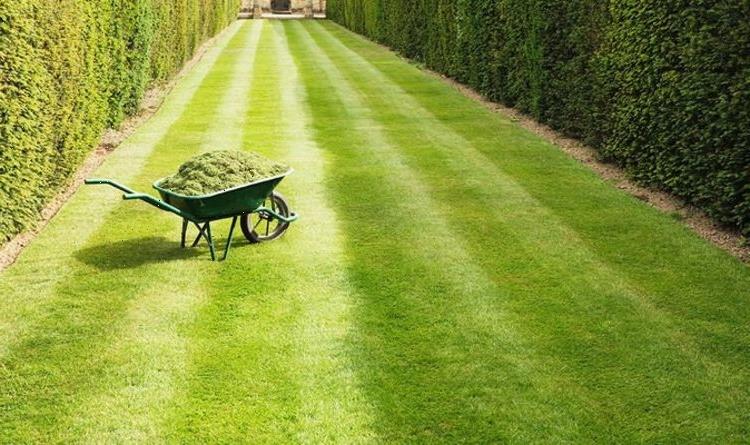Homebase offer advice on how to mow a lawn
We use your sign-up to provide content in ways you’ve consented to and to improve our understanding of you. This may include adverts from us and 3rd parties based on our understanding. You can unsubscribe at any time. More info
Mr Plant Geek, Rowse Honey’s gardening expert, who is also known as Michael Perry has explained the advantages of both growing and mowing your lawn. Mr Plant Geek is working with honey brand Rowse to spearhead positive change for the bees through Hives For Lives – a program of vital initiatives that protects the bees and improves livelihoods through beekeeping. Together with its partners, Rowse is spotlighting the critical role bees play, from maintaining biodiversity to food production.
And in turn, the vital role Britons can play in saving these important pollinators.
Lawns and long grass can increase the number of bees and other pollinators that enter your garden.
However, if you prefer a neat garden with a tidy lawn, fear not, as Michael has explained why this also has it’s advantages for wildlife.
Mr Plant Geek said he “doesn’t have a lawn at all” in his garden but has managed to create an area that is still great for pollinators.


He explained: “I’ve actually got polished concrete and I’ve got that surrounded by lots of great plants. – great pollinating plants.
“That’s not really any different to having a lawn.”
Most people would “traditionally” assume most gardens would have a lawn in the middle.
But Michael said Britons don’t “need to think like that” when designing or imagining a garden.
DON’T MISS
Cheapest UK seaside town to buy a holiday home [INSIGHT]
Mrs Hinch fan shares 99p product to prevent flies – ‘it repels them’ [UPDATE]
‘Stops moss forming!’ Mrs Hinch fans share £1 hack for cleaning patios [ANALYSIS]
“You can have a lawn that is manicured and obviously that’s a lot of effort – but a lot of people do like to have that look,” he added.
He explained further: “Those lawns that are being trimmed are actually making it easier for birds potentially to reach worms that are in the soil.
“There’s different wildlife and creatures that will benefit from a cut lawn.”
A long lawn may look untidy to some people but grass that has not been mown for a year will host, on average, three pollinators per square metre.
Looking for a new home, or just fancy a look? Add your postcode below or visit InYourArea
Mr Plant Geek said a lawn that is left long and has got wild flowers in is “ultimately better” for wildlife.
However, he assured that if you have got a “manicured lawn” that isn’t “curtains” for the wildlife.
In fact, there are plenty of other options out there to help you encourage wildlife and pollinators into your garden.
He continued: “You can have lots of pollinator-friendly plants in the borders as well.

“Big areas are containers and hanging baskets. It could be you insert a few more pollinator-friendly plants into those landscapes which is somewhere that you don’t usually see pollinators accommodated for.
“We always think of borders and lovely long cottage garden plantings.
“It could be your hanging baskets have some everyday annuals and patio plants that are actually really good for bees and butterflies.”
If you’re not sure what to plant, Rowse Honey has created a year-round calendar of pollinator-friendly plants to keep bees happy.
The calendar includes plant species such as magnolia, pennies, lavender, sedums and snowdrops.
Source: Read Full Article
